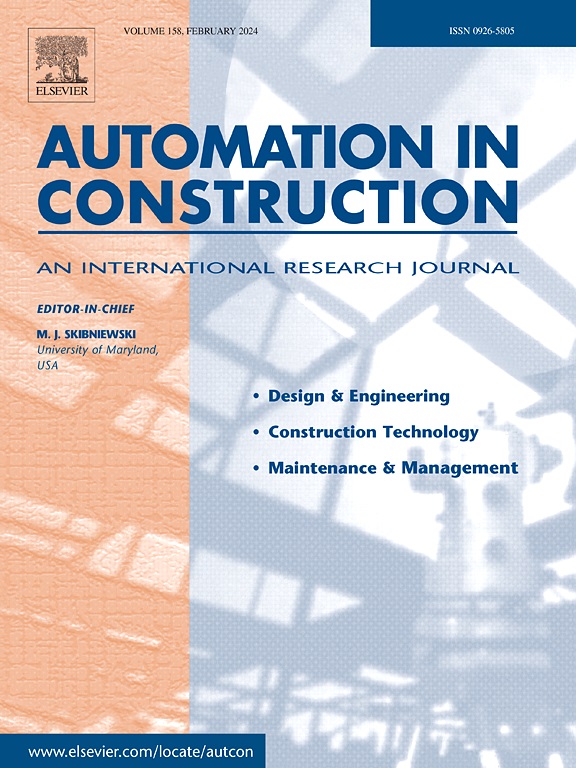Digital twin-based fatigue life assessment of orthotropic steel bridge decks using inspection robot and deep learning
IF 9.6
1区 工程技术
Q1 CONSTRUCTION & BUILDING TECHNOLOGY
引用次数: 0
Abstract
Fatigue cracks are a major issue affecting the lifespan and operation and maintenance (O&M) costs of bridges with orthotropic steel decks (OSDs), while current practices for detecting fatigue cracks often rely on manual inspection with time inefficiency. This paper presents a digital twin framework that employs robots equipped with nondestructive testing devices for data collection and deep learning algorithms for data analytics, aiming to enable automatic detection of cracks and assessment of fatigue life. Inspected crack are fed into a finite element model constructed via ABAQUS-FRANC3D co-simulation to conduct fatigue life analysis, and an MLE-PCE-Kriging surrogate modeling technique is developed to facilitate rapid assessment of fatigue life. The deep learning-based crack detection achieves accuracy and recall of 95.6 % and 92.2 %, respectively, while the MLR-PCE-Kriging model exhibits an MPAE of 2 %, demonstrating high accuracy. The proposed digital twin framework can guide automated bridge inspection, thereby promoting intelligent O&M management for bridges.

求助全文
约1分钟内获得全文
求助全文
来源期刊

Automation in Construction
工程技术-工程:土木
CiteScore
19.20
自引率
16.50%
发文量
563
审稿时长
8.5 months
期刊介绍:
Automation in Construction is an international journal that focuses on publishing original research papers related to the use of Information Technologies in various aspects of the construction industry. The journal covers topics such as design, engineering, construction technologies, and the maintenance and management of constructed facilities.
The scope of Automation in Construction is extensive and covers all stages of the construction life cycle. This includes initial planning and design, construction of the facility, operation and maintenance, as well as the eventual dismantling and recycling of buildings and engineering structures.
 求助内容:
求助内容: 应助结果提醒方式:
应助结果提醒方式:


